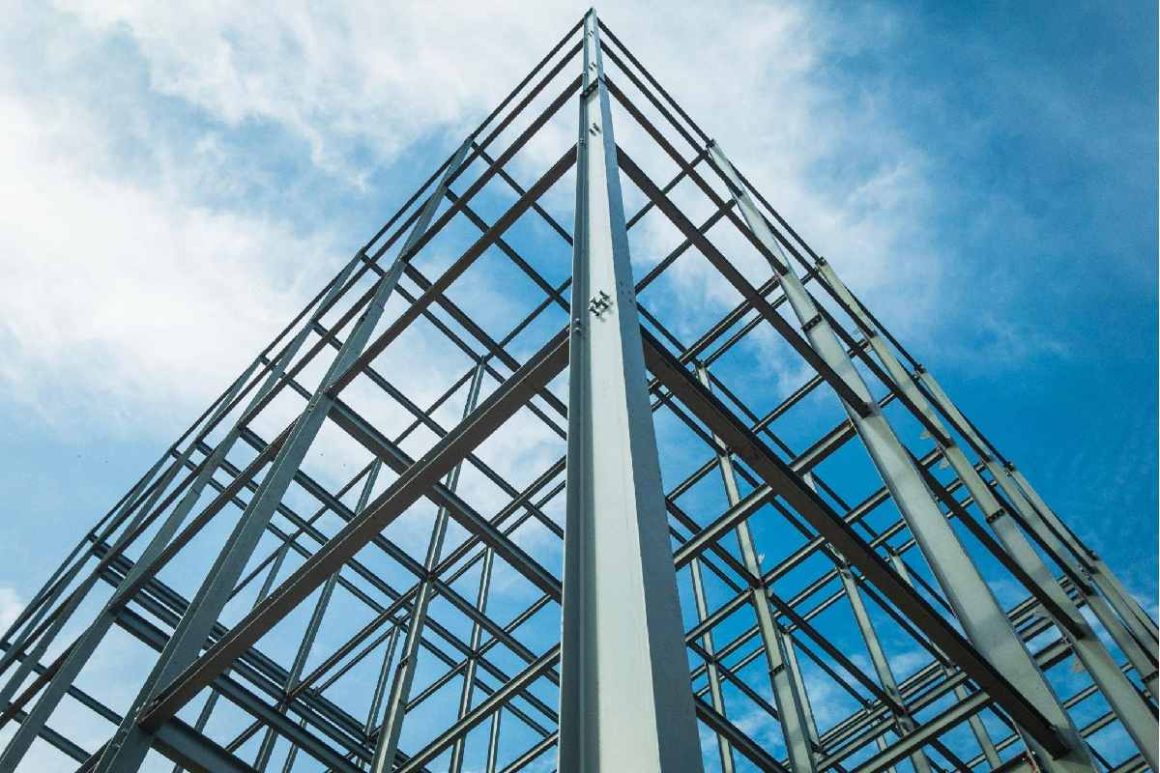Steel Framed Buildings are metal structures that use vertical and horizontal beams to form a sturdy, robust skeletal frame for buildings. These structures can support heavy floors, walls, and roofs without buckling under pressure and boasting high weatherability that allows them to resist deterioration.
In this article, we’ll be discussing the various benefits and uses of steel framed buildings, including the various sectors they’re used in.
Table of Contents
The Benefits of Steel Framed Buildings
The multitudinous benefits of steel are what earn it the spot as one of the best building materials on the market. But what are the advantages of using steel as your primary structural component?
-
Steel is Robust
Steel is far tougher and stronger than other types of building materials, making it the ideal choice for constructing skeletal frames. Steel framed buildings rely on durability and resistance to damage over long periods of use, which is what makes steel so effective. This also allows the building to withstand seismic activity.
-
Steel Framed Buildings are Structurally Sound
Steel is able to withstand far more weight, pressure and stress than other types of building materials. So you don’t have to worry about the structure crumbling under pressure.
-
Steel is Weather-Resistant
Unlike other building materials, steel can withstand humidity, snowfall, rain, storms, and extreme weather conditions without cracking, falling away or rusting. Also, steel can be made additionally resistant with the help of steel coatings, which can extend its lifespan considerably.
-
Steel is Self-Supporting
The high strength to weight ratio of steel allows it to support itself without the help of additional pillars, columns or beams, making them ideal for the type of open-plan interiors found in high-rise buildings.
-
The Lifespan of Steel is Incredibly Long
Enhanced by coatings or on its own, steel can maintain its optimal condition for several decades without intervention. This is because it’s resistant to corrosion, rust and oxidation.
-
Steel is Eco-Friendly
Steel can be used, melted, moulded and reused multiple times while keeping its strength and malleability. This means that if a steel framed building needs to be dismantled for any reason, that same steel can be used to make another steel framed building.
-
Steel Buildings can be Constructed Exceptionally Quickly
As steel framed buildings are often prefabricated, they can be installed very quickly. This leads to significantly lower costs once the steel arrives on-site.
-
Steel is Cheap
Since steel is easy to manufacture and install, and it’s self-supporting, it is a far more cost-effective alternative to other building materials. Post-installation, the low maintenance requirements and its recycling capabilities, it will essentially pay for itself in the long run.
-
Steel is Fire Resistant
Steel is inherently fire-resistant and will not bend if exposed to its high temperatures, nor will it contribute to the spread of fire should one occur. These qualities are critical for ensuring regulatory compliance, and extremely beneficial for containing damage.
So, in what sectors are steel framed buildings used?
Commercial Buildings
Steel is often used to construct commercial buildings as its self-supporting nature allows for large, open-plan spaces that are often used for shopping centres.
Industrial Facilities
The self-supporting nature of steel ensures that the facility remains structurally sound without the need for additional support beams. These beams may get in the way of the day-to-day activities of a warehouse and create a dangerous working environment.
Agricultural Buildings
Steel framed buildings are often used in the agricultural sector for storage of farm vehicles, crops, and livestock. Since they can be reinforced and are naturally resistant to pests and corrosion, this makes steel the perfect material for agricultural buildings.
Aviation and Automotive Buildings
Steel framed buildings are perfectly suited for aviation buildings and hangars, as the steel is able to support itself over a large surface area. This makes the perfect environment for planes and helicopters of various sizes, and as many as a fleet of cars.
Educational Institutions
Schools and Universities often integrate steel framed buildings into their campuses due to the space a self-supporting steel building can create. Open-plan gyms, swimming pool rooms, and large classrooms are all possible with the help of steel framed buildings.


